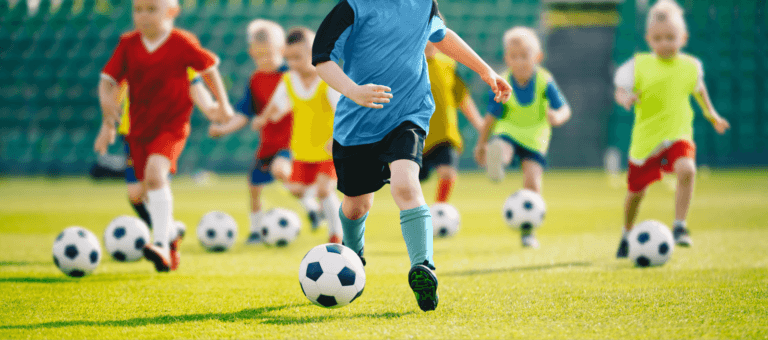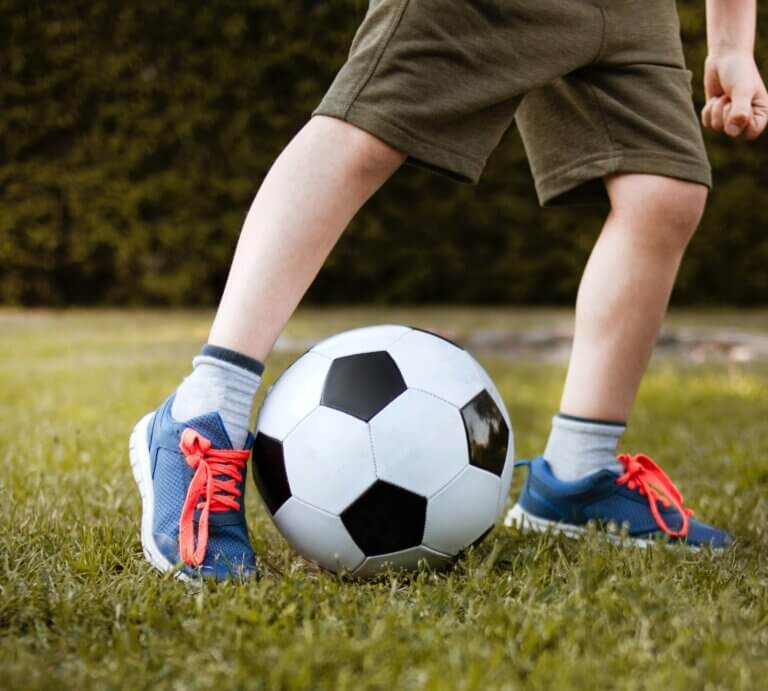
Stretching is a vital component of any football training regimen. It prepares the body for the physical demands of the game and aids in recovery afterwards. This article provides a comprehensive guide to the best stretches for young football players, targeting key muscle groups used during the game.
Incorporating these stretches before and after training can enhance performance, reduce the risk of injury, and aid in post-exercise recovery. Football For Kids strongly supports safety in football whilst also having fun, so make sure you follow these tips.
Pre-Training Dynamic Stretches
Dynamic stretches are essential before training to warm up the muscles and increase blood flow. These stretches involve movement and should mimic the activities in the training session.
- Leg Swings: Stand and hold onto a steady object. Swing one leg forward and backward, then side to side. This warms up the hip flexors, glutes, and hamstrings.
- Walking Lunges: Step forward into a lunge and alternate legs. This engages the quads, hamstrings, and glutes, improving lower body flexibility and balance.
- Arm Circles: Rotate your arms in large circles to warm up the shoulders and upper body. This is particularly important for goalkeepers.
- High Knees: Jog in place, lifting your knees high towards your chest. This activates the leg muscles and increases heart rate.
- Butt Kicks: While jogging, kick your heels up towards your glutes. This stretch warms up the hamstrings and quads.
Post-Training Static Stretches
After training, static stretches help cool down the body, improve flexibility, and prevent muscle tightness.
- Hamstring Stretch: Sit on the ground, extend one leg out and tuck the other in. Reach towards your foot. Hold for 20-30 seconds, then switch legs.
- Quadriceps Stretch: Stand and pull one foot towards your buttocks, keeping your knees together. Hold for 20-30 seconds and switch.
- Calf Stretch: Place your hands against a wall and extend one leg back, pressing the heel to the ground. Hold for 20-30 seconds and switch legs.
- Groin Stretch: Sit and put the soles of your feet together. Gently press your knees down with your elbows. Hold for 20-30 seconds.
- Hip Flexor Stretch: In a lunge position, push your hips forward and hold. This stretches the hip flexors and the front of the thighs.
Tips for Effective Stretching
- Always warm up with light cardio before stretching to increase muscle temperature.
- Do not bounce during static stretches. Hold the stretch at the point of mild discomfort, not pain.
- Breathe normally while stretching. Avoid holding your breath.
- Focus on symmetry. Stretch both sides of your body equally.
Incorporating these stretching exercises into your football training routine can significantly improve flexibility, prevent injuries, and enhance overall performance on the field. Remember, consistency is key. Regular stretching can lead to long-term benefits, including better agility, strength, and endurance.




